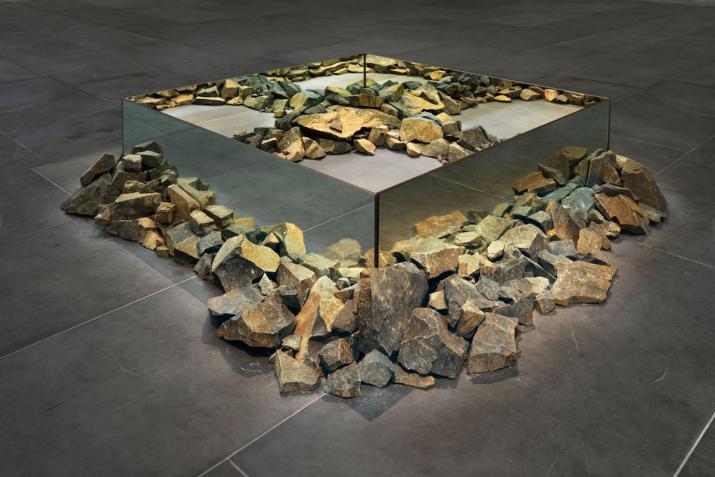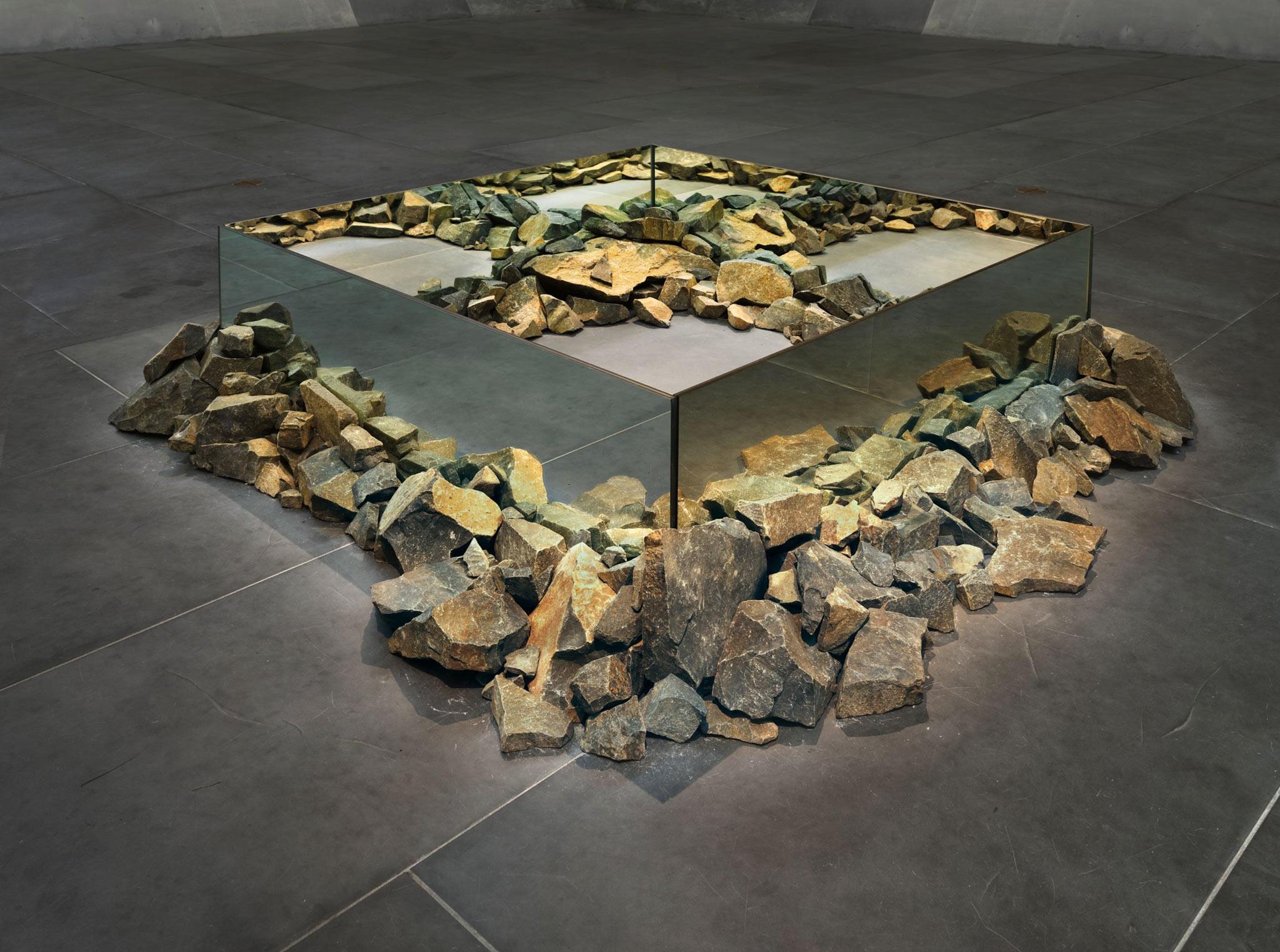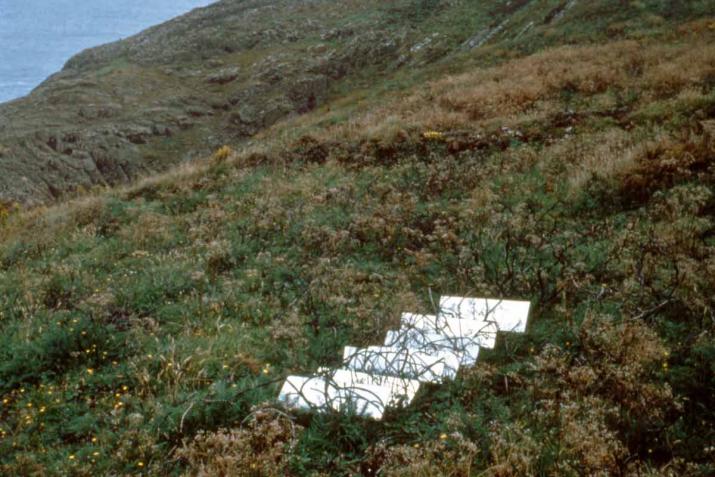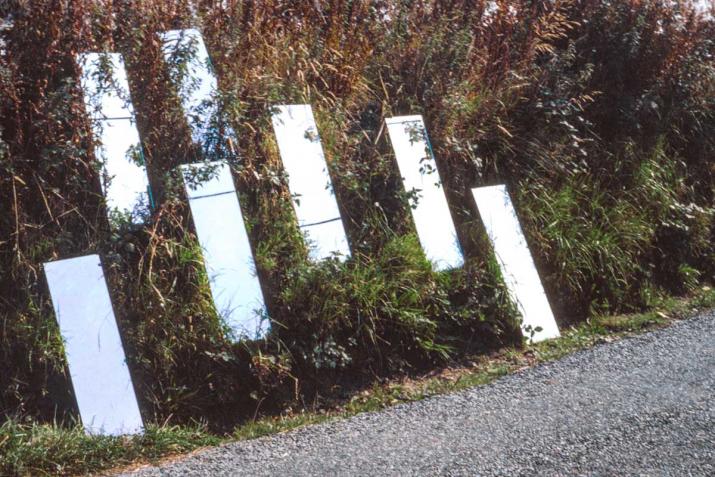
Robert Smithson’s Crystal Lattices: Mapping the Shapes of Time
Rocks and Mirror Square II (1971) is constructed from eight, identically sized mirrors, placed back to back against each other to form a mirrored square shored up with basalt rocks. The granular irregularities of the basalt are juxtaposed against the crisp geometry of the structure as a whole. The mirrors are entirely supported by the rocks. In Robert Smithson’s words, the “pressure of the raw material against the mirrored surface is what provides its stability."



